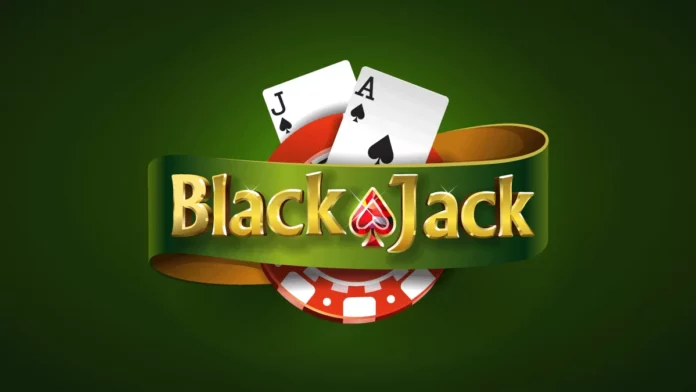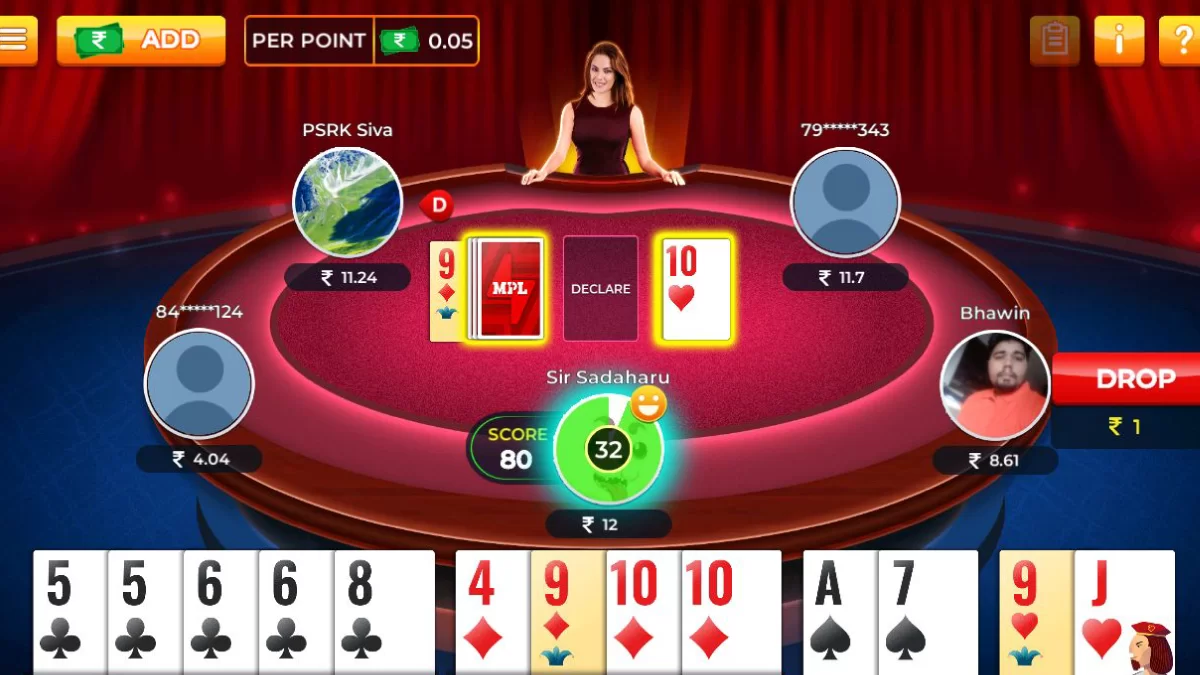Blackjack is a widely played card game that is as popular as poker in casinos around the world. The game is derived from a family of casino banking games and is also known as Twenty-One. What is it that makes this card game exciting and thrilling at the same time? Well, most games pit you against other players, but blackjack is different. When you play blackjack online or in casinos, you are up against the dealer rather than the players. All the players play to beat the dealer in this comparing card game.
The game dates back to the 1760s in France, where it was known as Ving-et-Un, meaning 21 in French. The game got quite popular in World War 1 and continues to be an attractive card game in every American casino.
Sounds interesting? The game is pretty straightforward and requires certain skills for a smooth win. Here’s everything you should know to start playing the Blackjack game right away!
You can also try your hand at these Two-Player Card Games For Beginner to Expert Level Players
How to play Black Jack?
Blackjack is a single-deck game, usually played with a standard deck of 2 cards. However, casinos often shuffle several decks together. The objective for each player in the game is to beat the dealer by getting a count of 21 or close without exceeding the number.
Learning how to play blackjack is not very difficult. Basically, it’s a simple game that involves primary math skills of adding the values of cards to arrive at 21 or a number closer to it. For that matter, each face card is worth 10, aces are worth 1 or 11 (up to the player to decide), and the other cards are worth their face value.
Before the dealer deals cards, the players place bets in chips, establishing minimum and maximum limits on the bet. After all the players place their bets, the dealer deals one card, face-up, for each player, and one card for themself. The dealer then deals a second round of cards face-up to each player and face-down to themself. Starting with the player at the left of the dealer, each player decides if they want to stand (not ask for another card) or hit another card to get closer to 21. After dealing cards to each player, the dealer turns their card face-up. If the to al value of cards adds up to 17 or more, the dealer must stand. But if the total value of cards adds up to 16 or less, the dealer can take a card.
If the dealer crosses 21, he pays the bet to each player who stood. If the dealer arrives at 21 or less, he pays the bet only to the players who sta d at any number above the dealer’s total, but not exceeding 21. The dealer also collects the bet from players who stand at a lower total. If a player stands at the same total as the dealer’s, no chips are collected or paid by the dealer.
Blackjack Rules to Play Hands
- As per the basic rules of the game, the face cards are valued at 10, Ace as either 1 or 11, and the other cards are valued basis their face value.
- If the initial two cards are an Ace and a 10 or any face card, it is a natural blackjack that totals up to 21.
- Blackjack pays 3:2 of the bet; therefore, if the dealer also has blackjack, you will not lose to the dealer and instead tie. Blackjack players have several options above the house.
Dealers respond to hand signals over verbal instructions when playing your hand in the game. The players use five ways to play their hands during their turn – Hit, Stand, Double, Split, and Surrender. There are also a few special situations where the rules deviate – Insurance Bet, Blackjack Side Bets, Non-Insurable Dealer Blackjack, and Dead Hand.
Hit
Players play hit when they want more cards to increase the hand total. The dealer deals one more card to the player in case of a hit. The dealer deals cards on hit, one at a time, until a player goes bust or chooses to stand. A player goes bust when the hand total goes beyond 21. To signal a hit, you can tap the table with a finger.
Stand
When the hand total with the first two cards is acceptable by a player, they choose to stand, which means they end their turn and stop taking any cards. The dealer doesn’t deal any more cards to the player and instead moves on to the next player. To signal a hand, you can either place an open palm over the felt of the table or wave your hand.
Double
Double or double down is an exciting hand that players play when they feel that their hand total is advantageous and that they should double their wager with an additional card. The dealer deals one more card, turned sideways when the player signals by putting a bet equal to the previous bet on the left side of the initial wager. Many casinos allow players to double for less, which means they need not put an equal wager to the initial wager.
Split
If a player is dealt a pair of two cards of the same value, the player can choose to go for a second wager. In such instances, the dealer splits the two cards such that each card represents the first card of two hands. Even the face cards can be split. For instance, a Queen and a Jack can be split into two new hands even though they aren’t a pair, as they have the same value. To signal a split, you can put a second wager equal to the first wager and signify to split instead of doubling down with a peace sign ✌️. The dealer will deal a second card to both hands.
Surrender
In the case where you aren’t happy with the initial hand dealt, you can choose to give it up and take half of the original bet back. You can draw a horizontal line behind your bet to signal surrender. However, this signal could also be mistaken for a hit signal. Therefore, it’s always best to say surrender verbally to the dealer while signaling by drawing a line on the felt of the blackjack table.
Insurance
If the dealer’s first card is an ace, you can make an additional wager of up to half of the original stake to protect your bet if the dealer makes a blackjack. With this insurance of an additional wager, if the dealer’s hand is blackjack, you lose the bet, and the insurance bet is paid 2:1. However, if the dealer doesn’t make a blackjack, the insurance bet will not be paid, and the game will proceed. If you have a blackjack while the dealer has an ace as the first card, you can choose to take even money.
Also Read: An Exclusive List of the Best Card Games in India
Basic Strategy to Play Blackjack Games
Blackjack is an easy-to-play game that requires basic math skills of counting cards values. However, every game you play requires a basic strategy for playing a hand in an optimum way. A basic strategy can ensure that your expected loss, also called the long-term house advantage, is minimized. Here’s the basic strategy to adopt when playing blackjack games while considering the dealer’s upcard.
- When the dealer’s upcard is good, like a 7, 8, 9, 10, or Ace, you should draw cards till you reach a hand total of 17 or more.
- When the dealer’s upcard is poor, like a 4, 5, or 6, you should stop drawing when the dealer gets a hand total of 12 or more.
- If the dealer’s revealed card has a value of 4, 5, or 6, it is wise to double down the bet with an Ace and 4 in hand.
- If the dealer has an Ace, 9, or 10 and you have a hand total of 16 in hand, you can consider surrendering.
- If you have a pair of Aces, you must go for a split.
- With a pair of 7s in hand, signal for a hit only when the dealer has an Ace, 8, 9, or 10.
- If a player has a hand total of 11, the player must always double down. The player can consider doubling down with a hand total of 10 unless the dealer shows an Ace or 10.
Blackjack Rule Variants
Blackjack has different rule variations that change the dynamics of the game in context to the odds and favorability to the player. Here are some blackjack rule variations that impact the odds of the game.
Doubling After Splitting
Doubling after splitting means a player can double down on a hand after they just split. While some casinos allow double splitting, other casinos don’t; but this rule is advantageous for the players.
Re-Splitting Aces
The re-splitting aces rule is as simple as the name. Some cardrooms allow players to re-split their aces in more hands if they have split a pair of aces and are dealt another ace in the next card. The players can re-split aces up to a total of 4 hands. The ace being the most powerful card in blackjack gives an advantage to the players when the casinos allow re-splitting of aces. However, if the cardroom allows the RSA rule, the player is allowed to take on one card for each ace.
6 to 5 Blackjacks
In some of the casinos, the rule of 3 to 2 payout for blackjack is reduced to 6 to 5. The rule basically gives an advantage to the house and seems to be heavy on the players’ pockets. The rule also makes card counting redundant. Casinos that include this rule may not have the rule implemented on every table; therefore, you must read the table rules carefully before you join one.
Single vs. Multi-Deck
For every deck added to the blackjack game, the house edge gets higher. Therefore, a single deck game would give less advantage to the house in comparison to a multi-deck game, provided all other conditions are the same. However, other conditions are not the same in the game more often than not. For instance, a single deck game may not allow re-splitting aces or doubling after splitting, and will have 6:5 blackjack. Whereas, an 8-deck blackjack game in the same casino may allow re-splitting aces, 3:2 blackjack, and double after splitting with a lower house advantage.
Early Surrender
The early surrender rule is pretty much redundant and is not used in casinos anymore. Essentially, the rule is similar to the usual surrender rule, with the difference that the player could surrender before the dealer offers insurance or checks for a blackjack. This rule was highly favorable for the blackjack players as it gave them an edge.
Also Read: 5 Challenging Online Card Games for Real Money
Games similar to Blackjack
The popularity and standard rules of the blackjack game played in the casinos led to several variations created by the casinos using similar rules a d terms. Here are some of the variations that seem to be a lot like blackjack
Super Fun 21
A blackjack variation where the player can split a hand up to four times. It’s a single-deck game where the players can surrender or double on any number of cards. You automatically win if you have 5 cards totaling 21 or 6 cards totaling 20. The wins are paid in a 1:1 ratio.
Spanish 21
The rules of the Spanish 21 game are quite similar to Super Fun 21. However, in this variation, the blackjacks pay 3 to 2, and players can double down twice with the same hand. The liberal rules of the game allow players to double down on any number of cards with an option to surrender or rescue only one bet to the house. The other rules include late surrender, payout bonus for five or more cards totaling 21, three 7s totaling 21, or 6-7-8 totaling 21. The player 21s and player blackjacks always win. The only exception is that there are n 10s in the deck of Spanish 21, which are the most valuable cards in the game.
Blackjack Switch
In the blackjack switch games, you start with two hands and can switch the second card between both hands if you think it will make a better set of two hands. For instance, if you are dealt a 10 and 6 in one hand and a 10 and 5 for another hand, you can switch two cards and change your hands to 10-10 and 6-5. This sounds like a great deal that doesn’t exist in the original blackjack game. The natural blackjacks are paid 1:1 in this game rather than a usual 3:2, and the dealer pushes all bets if they get a 22.
21st Century Blackjack
Also known as Vegas Style Blackjack, 21st Century Blackjack is widely played in the casinos in California. Depending on the card room, if you bust (get a hand total above 21), it doesn’t always lead to an automatic loss. You can push to see if the dealer also busts with a higher total than yours.
FAQs
1. What is the difference between Black Jack and 21?
There’s no difference between the two. Both Blackjack and 21 refer to the same card game where the objective is to get a hand total of 21. Basically, 21 is another name for the blackjack card game.
2. What happens if you go over 21 in blackjack?
if a player or dealer gets a hand total of over 21 in blackjack, it is called a bust. If the dealer makes 21 or less in hand total, the dealer pays the bet to players that have a higher total (but not more than 21) and collects the bet from players with a lower total. If the dealer crosses 21, he pays each player that stands as per the bet.










